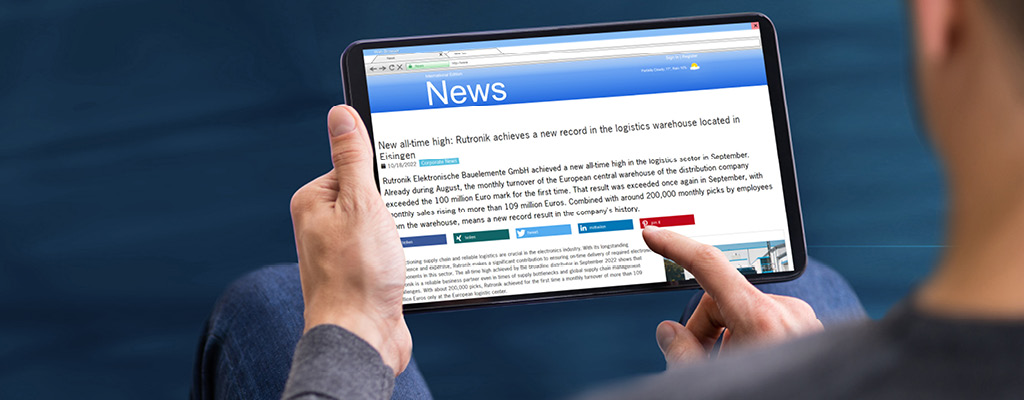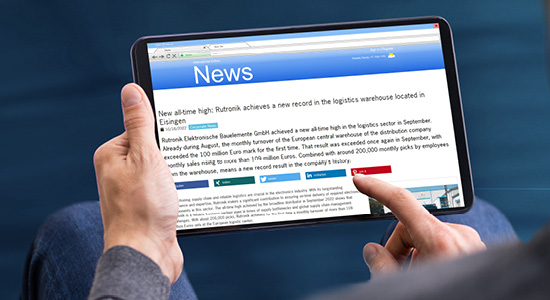In December 2019, Project Connected Home over IP (CHIP) was unveiled as a new, open smart home standard. Behind it is a group of leading technology companies, including Amazon, Apple, Google, Samsung, and the Zigbee Alliance, now called the Connectivity Standards Alliance (CSA). In May 2021, they laid down the first specifications and gave the CHIP project its new name, Matter. In October 2022, the release of Matter 1.0 marked the start of certification for the first devices. The first update, Matter 1.1, was released as early as May 18, 2023. The CSA had already announced that it would adopt new versions of the standard twice a year.
The companies involved in Matter are pursuing several goals. By improving interoperability between smart home devices from various suppliers, the goal is to enable seamless integration and control. To this end, Matter supports multiple communication technologies, such as WiFi, Ethernet, and Thread. Bluetooth is also used for the fast and user-friendly integration of new devices into the existing Matter network. Users will also be able to connect their smart home devices directly and securely over the Internet without the need for additional equipment or components. Additionally, devices using Matter should be able to communicate seamlessly across various platforms and applications to make the smart home market even more accessible and user friendly.
One interesting feature is multi-admin operation. By enabling each Matter-enabled smart home ecosystem to have a pairing mode, Matter devices are no longer exclusively tied to one control, but are accessible through multiple systems in parallel. For example, a smart TV added to Apple Home with an iPhone can also be used by other family members or roommates through the Google Home app on their Android smartphones. In addition to interoperability, Matter has numerous other benefits up its sleeve. These include its ease of use: Thanks to a user-friendly interface, users can control their smart home devices without using a myriad of apps and platforms. Further, its ability to also integrate future technologies and innovations makes Matter future-proof.
Cross-vendor data exchange
Matter is based on the IPv6 network protocol. This enables all devices to network with each other independently. A common data model also facilitates data exchange between various smart home devices. They can then communicate directly with each other without the need for a hub or any other type of gateway, provided the participants are in the same physical network. With open standards such as WiFi/WLAN (IEEE 802.11), Thread (IEEE 802.15.4), and Ethernet/LAN (IEEE 802.3), Matter supports a wide range of devices. A fourth added standard is Bluetooth Low Energy (BLE), which allows a smartphone or tablet to establish an initial wireless connection with the Matter device during installation – a method already used by many suppliers today. For example, new WLAN speakers are automatically displayed in the supplier’s app when they are turned on. The smartphone then sends the WLAN access data to the speakers via Bluetooth to ensure they can log in to the home network. A so-called Matter border router is required to communicate between Thread and WiFi. Some vendors have already released products that combine Matter controllers and border routers, such as Apple TV 4K, Apple Homepod Mini, Samsung SmartThings Hub, and numerous Amazon Echo devices.
Integrated security
Another important goal that vendors are pursuing with the Matter standard is to increase security and protect users from privacy attacks. When hackers try to gain access to smart home devices over the Internet, the devices are often poorly protected, running outdated software and offering very little resistance to attackers through the use of predictable passwords. As a result, security concerns are the number one reason people do not purchase smart home devices: 47 percent of non-users fear hacker attacks, 37 percent are afraid of misuse of their personal data, and 29 percent worry about their privacy being compromised, according to a September 2022 survey commissioned by Bitkom. To address these concerns, security requirements were already considered during the development of Matter according to the “Secure by Design” principle: The Device Attestation Certificate (DAC) protects against counterfeiting by ensuring that the hardware really comes from the original supplier. To protect against counterfeiting, there is also a supplier’s certificate, signed by an official certification authority. In addition, there is tap-proof communication and secure control. Through PKI encryption and strong security protocols, Matter ensures user privacy and security.
Still only a few devices available
However, despite the many benefits of Matter, there are still a limited of number of devices available. Since Matter is still relatively new, the selection of compatible devices is still restricted, and it will be some time before more devices are available or until a software update is available for existing devices with IEEE 802.15.4-capable transceivers. For example, a software update is expected for many ZigBee-based devices, provided the internal memory is large enough to support a firmware update over the air (FOTA). Given the benefits of the new standard, the market is expected to quickly fill with Matter-enabled devices as soon as more smart home providers introduce corresponding products. Smart home devices with proprietary connectivity technology are unlikely to have much of a future thanks Matter’s technical sophistication and ease of use. After all, end users are not likely to want the hassle of border routers, protocols, and device profiles, preferring instead the simplicity of operating as many devices as possible via the same interface after a simple setup. With Internet connectivity, offline functionality, and cross-device control capabilities, Matter relieves product suppliers of what is arguably the most challenging aspect of development. At the same time, this leaves suppliers with fewer options for differentiation. In the case of radiator valves, this could be the volume of the actuator motor, the size of the energy storage device, and the display. When redesigning a product for conversion to Matter, it is therefore advisable to give the product a facelift to signal to buyers that this is a highly innovative product. This is where the display really comes into its own as a human-machine interface. It is important for suppliers of Matter-enabled products that have wireless capabilities, connect to the Internet, and process personal data or financial transactions to be aware of the new security requirements that will apply to sales within the EU single market from August 1, 2025. For more information, see the article “Greater security for the networked world” on page 01WKE.
Matter-enabled chips and modules
Rutronik’s portfolio already includes numerous products for the development of Matter devices: Infineon, Nordic Semiconductor, Panasonic, and InsightSiP are just some of the suppliers of corresponding chips and modules that Rutronik carries. As a member of the CSA, Infineon offers Matter-capable components, such as the PSoCTM-6 family. Both the PSoCTM 62 and the PSoCTM 64 become Matter-capable in combination with a WiFi IC. In general, any WiFi IC that supports Matter can be used. If you use one from Infineon, such as the CYW43439, CYW43012, or CYW4373, the programming is completely supported by the IDE ModusToolbox. It can also be used to import and map the Matter stack to the PSoCTM-6 device. For March 2024, Infineon has announced a chip (CYW30739) that will support Matter over Thread. In addition, it will use the convenient BLE commissioning in the Matter network. The chip will probably only be available to a manageable number of suppliers, but a mass market module incorporating it will be available to interested parties through Rutronik. Infineon’s security chips, such as OptigaTM Trust, are the ideal trust anchors for the customer-specific login information that every Matter-certified device must feature. Like Infineon, Nordic Semiconductor is a member of the CSA and offers various chips for Matter, such as the nRF52840, the nRF5340 and the new nRF54 family, as well as Nordic’s latest release in the WiFi sector, the nRF7002. The nRF54 family will be available in 2024 (Fig. 4). With state-of-the-art security technologies, it is ideally suited for future Matter devices. Designed for PSA Certified Level 3, it features a physical unclonable function-based (PUF) root of trust, secure boot, firmware update and storage, as well as cryptography acceleration, side-channel protection, and tamper detection. The nRF54H20 starts with two Arm Cortex M33 processors running at up to 320 MHz to handle computationally intensive applications and radio communications and two RISC-V co-processors for ultra-low-power tasks and software-defined peripherals. The 2 MB flash memory enables FOTA in most Matter-based applications without additional external memory.
While the nRF54 family as well as the nRF5340 and nRF52840 use Matter over Thread, the nRF7002 uses Matter over WiFi. When combined with one of the BLE SoCs mentioned above, it can also be used for convenient BLE commissioning in the Matter network. The Nordic nRF Connect SDK v2.4 supports the development of all kinds of applications, including those based on the latest Matter 1.1 version. This includes Periodic Advertising with Response (PAwR). Further, it allows devices that receive periodic advertisements to also send responses to the sender, creating bidirectional communication and enabling large one-to-many topologies. In addition, Nordic already offers KNX integration on Github to also meet industrial building services standards. This will help the supplier maintain its lead among SoC suppliers for smart homes and smart buildings in the future. Panasonic has Matter modules based on Nordic Semiconductor’s chips. In the Matter over WiFi segment, the PAN9028, is offered in two versions: either with or without an integrated power management IC (PMIC). PMICs for battery-powered devices – whether the application offers radio or not – also represent a very rapidly growing product genre from Nordic. New WiFi6 and WiFi6E modules are the PAN9019 and PAN9019A, respectively. Both use Matter over WiFi; the PAN9019A is additionally capable of Matter over Thread. Pure Matter-over-Thread modules are PAN1770 and PAN1780. They are based on Nordic's BLE chip nRF52840. Panasonic has announced a module based on Nordic’s nRF5340 for December 2023 (PAN1783). It will be among the smallest nRF5340-based modules on the market and will be available with either bottom-pad or chip antennas. InsightSIP also uses Nordic chips for its modules: Based on the nRF5340, the supplier offers the ISP2053-AX, for example. It uses the Matter-over-Thread connection, as does the ISP1807-LR, which is based on the nRF52840. InsightSiP’s modules also already include crystals and certifications and are popular due to their extremely small size. They still look like a chip thanks to the patented internal antenna. For price-sensitive devices, Rutronik offers similar modules from Minew, which is listed as an official module partner with Nordic. Matter-capable, for example, is the MS45SF11, which is based on Nordic’s nRF5340. Here, too, the Matter-over-Thread process is used. Minew’s new flagship is the MS12SF1. The module has both the nRF5340 and the WiFi companion chip nRF7002 built in, making it one of the first combo modules to support both Matter over Thread (nRF5340) and Matter over WiFi (nRF7002) through its two chips.
For more information and a direct ordering option, please visit our e-commerce platform at www.rutronik24.com.
Subscribe to our newsletter and stay updated.


